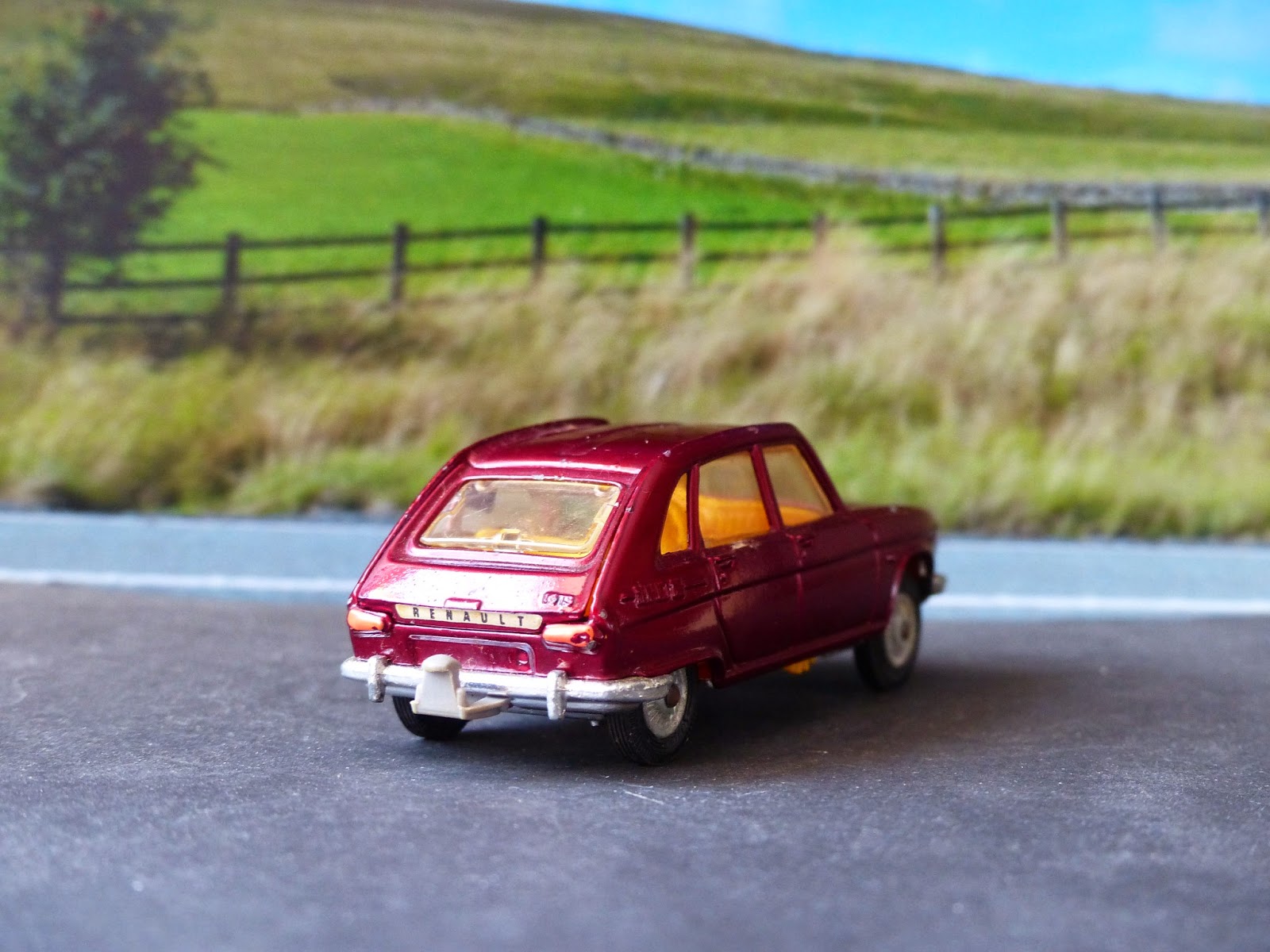A totally different cover in 1970 introduces a very different range. Gone is the young boy and his dad, strange scenes of oddly drawn models and its their place are two smart and fast-looking car illustrations with just graphic rather than accurate presence. It works as a modern cover of the day but doesn't bear much resemblance to what's on offer.
Some more familiar cars appear on the next pages of Whizzwheels including the ones that had been intended to come out with Golden Jacks in the previous year's catalogue. The Mercedes C111 has an 'artist's impression' type of drawing and is 'available later'. When it does appear it looks nothing like the illustration or, in many commentators' views it seems, the real thing! There's the Jaguar E type now devoid of opening doors but still hanging on to its mirrors. There is also a very yellow Bentley version of the Rolls Royce. I have seen pink versions but was there really ever a yellow one? The illustration looks like a photo and, whilst 'available later' makes me wonder if there is a rare variant somewhere to be found.
There is also 'Project X'. That sounds exciting. Unfortunately, the number associated with the intriguing image is #313 which would be the very unexciting Ford Cortina Mk III! It was a great model, to be fair, but hardly deserving the 'Project X' mystery.
There then follow a few more pages of cars that had been revived with Whizzwheels for better or worse. No, just for worse. You'll see the red Chevrolet Stingray there which actually only made it in blue or pink to my knowledge. However, this is a fascinating period because in the changeover I am sure there must have been several models in the original colours that got fitted with Whizzwheels bases and I would love to try and find some of them.
At the end of the Whizzwheels pages there is a promotion for something I never actually saw but which sort of justifies the Whizzwheels thing - the plastic tracking. You could certainly have some fun running some of the models around a good length of that yellow plastic lifted at one end or down a decent slope in the garden. That may account for why so many Whizzwheels models are in terrible condition - being slammed into each other or turfed off track at speed.
The appearance on page 12 of four old-style Corgis does look a little sad. Still going are the #334 Mini, the #226 Mini and, remarkably, #233 Bubble car! The fourth is the Oldsmobile Toronado and speedboat Gift Set. It's the blue one that's illustrated (without Golden Jacks) whereas on the next page you'll see the red one with them! there's also the original Rolls so how they can have expected the Bentley to sell in comparison I do not know, unless it would be a lot cheaper. There were still lots of Golden Jacks models that presumably were all done and so couldn't be reworked as Whizzwheels at that time so there are some more pages of these, including a decidedly pink Chevrolet Stingray which was only actually red and green!
A few old style sports cars make the catalogue as does the Grand Prix Racing Gift Set. TV and Screen favourites aren't quite as high profile as before but there are still plenty of them and The Hardy Boys version of an old Rolls Royce Silver Ghost is featured. This is one of the models that sold least of any and must be a future real rarity. I have never seen one but hope to have one coming in before long if the bids don't go crazy.
Farm equipment occupies another few pages and then there's the latest Transporter page, now with six cars, all Whizzwheels. There always seems to be a car on the Transporter that is totally wrong. before it would be a Sunbeam or Mini rally car and this time it's the ruddy Saint's Volvo! That just doesn't work at all for me! It is also ranks as one of the worst of the conversions too.
The surviving Citroen Safari in #513 mode is still there along with a weird selection of old style Commercial and Utility vehicles. There's a Concorde plane too! Finally, we get the very big and flashy fire engine things and a bus and the camera vans are still there, with the cut-out Citroen coupé making a very late appearance on the Tour de France model list (another items that is really quite difficult to find at a reasonable price these days).
At the very end is a promotion for Rockets. If you hadn't already realised that the good days were over then you should now, with things like 'Golden Keys' and more track for some pretty dodgy looking matchbox size versions. Things are in quite a mess now and the brand will never really recover.
This is the last catalogue post I can do. I have the cover and a few pages from the 1971-72 book but after than the 1:36 scale will strat to dominate, presumably and so there may not be much point my writing about any more. I shall try and get hold of a full 1971-72 catalogue as that could be quite interesting and who knows what I'll unearth in a 1973 one (if there is one).
 |
| The 1971-72 cover with my addition of model numbers |



























